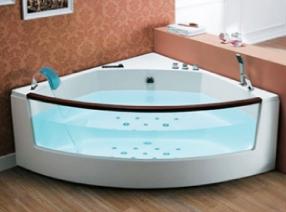

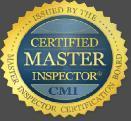




Combination
Code Certified
5188826 R-5
National
Certified Master Inspector®
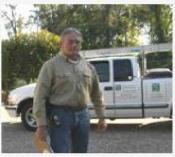
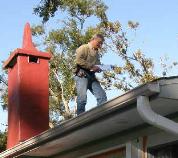
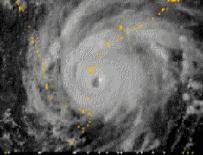
Spa, Whirlpool or Hydromassage Safety Warning
2019 © Coastal Inspections
Health/Safety Warning: There may be health hazards associated with using whirlpool or hydromassage bath equipment. A whirlpool or hydromassage is recommended to be professionally cleaned and sanitized prior to use and thereafter effectively maintained as scum and mildew type growth may grow inside the discharge piping. S ome unknown or adverse organisms may be health-threatening. Some tub manufacturers say to clean the tubs and circulating lines at least twice a month with low-sudsing detergent and a bleach solution.
ome unknown or adverse organisms may be health-threatening. Some tub manufacturers say to clean the tubs and circulating lines at least twice a month with low-sudsing detergent and a bleach solution.
A 2002 article in a construction journal notes a class action suit launched from Waco, Texas against some manufacturers of whirlpool tubs. Undrained water in the hidden plumbing supports the growth of “biofilms”, or organized communities of bacteria that survive cleaning efforts and quickly recontaminate the bath water when the tub is used next according to the article. A report by Dr. Rita Moyes, a microbiologist at Texas A&M University who tested water samples from 50 whirlpool tubs found (instead of algae) millions of Legionella, pseudomonas, staphylococcus, and human intestine bacteria - all potentially infectious organisms. Compared to tap water in the same house, Moyes reported, whirlpool tub water samples had bacteria counts averaging 5,000 times higher, with some samples containing tens of millions of bacteria in a half ounce of water.
The Legionella bacterium causes a type of pneumonia that got its name after a outbreak at an American Legion convention in Philadelphia. Three days after the convention ended, the first victim died. Within a week, more than 200 people, mostly men, had been hospitalized, and 34 had died.
People get infected with Legionnaires’ when they breathe in mist (small droplets of water in the air) containing the bacteria or accidentally swallow water into the lungs containing Legionella (pool or spa). Examples of such may include;
- Breathing in mist from a hot tub or hydromassage tub
- Breathing in mist from a dishwasher that has not been regularly used. There’s usually water standing inside the pump
- Breathing in hot or cold mist from a infected hot water tank when running the water
- Breathing in mist from a lawn irrigation system not regularly used. The
Legionella bacterium is commonly found in soil so a lawn irrigation spray may aid in the delivery method
- Breathing in contaminated HVAC condensate water. P-Traps should be kept clean
- A newer concern is tighter built homes and HVAC systems
(Article pending)
The bacterium can also grow and spread in the human-made water systems like cooling towers, large plumbing systems or hot water tanks as well as within water systems of hotels, hospitals, long-term care facilities, and cruise ships.
Kohler advises consumers to purge their tub units at least twice a month with two teaspoons of low-foaming dishwasher detergent and four ounces of household bleach. (see also below)
Under the wrong conditions, there is no doubt that the bacteria Moyes identified can cause illness and even death. Medical journal articles have blamed bacteria in hot tubs for infections ranging from a common rash called “pseudomonas folliculitis” to dangerous pneumonias, Pontiac fever, and a bacterial infection dubbed “hot tub lung,” as well as several fatal outbreaks of legionnaires’ disease.
However, Scientists at Montana State University’s Center for Biofilm Engineering (CBE) in Bozeman have found that once bacteria like Legionella or pseudomonas attach to a plumbing surface, they protect themselves with a matrix of secreted polysaccharide slime, forming tiny channels to bring in food and expel wastes and toxins. When tub jets are turned on, individual bacteria and bits of biofilm are shed into the water.
At a public health conference in Ontario, Canada, CBE director William Costerton, Ph.D., said whirlpool bathers might inhale water droplets contaminated with bits of bacterial biofilm that CBE researchers have observed “actually bouncing in a haze over the whirlpool.”
And the organized films are tougher and more dangerous than free-swimming, or “planktonic,” forms of the same bacteria, says Costerton. “[Biofilm fragments containing] as few as 100 cells of pseudomonas or Legionella can establish a pulmonary infection in animals,” he testified in one Texas case. “Biofilms can only be killed by concentrations of biocides 1,000 to 1,500 times higher than those necessary to kill planktonic cells.... Two teaspoons of dishwasher detergent and four ounces of household bleach circulated for 10 to 15 minutes would have very little effect.”
It may appear that 4 ounces (1/2 cup) of bleach is not enough as well as a limited cleaning time. Bleach may not kill some bacteria and viruses. As health is a personal responsibility the user is charged with their own sanitary expectations.There are bacteria and viruses that may be difficult at best to control. There are cleaning chemicals not readily available to the public so talk to your health care provider.
Copyright © 2002, Revised 2019 James L Hime LLC or Coastal Inspections, All Rights Reserved
Note. The author developed and survived Legionnaires bacterial pneumonia in late July 2018.
